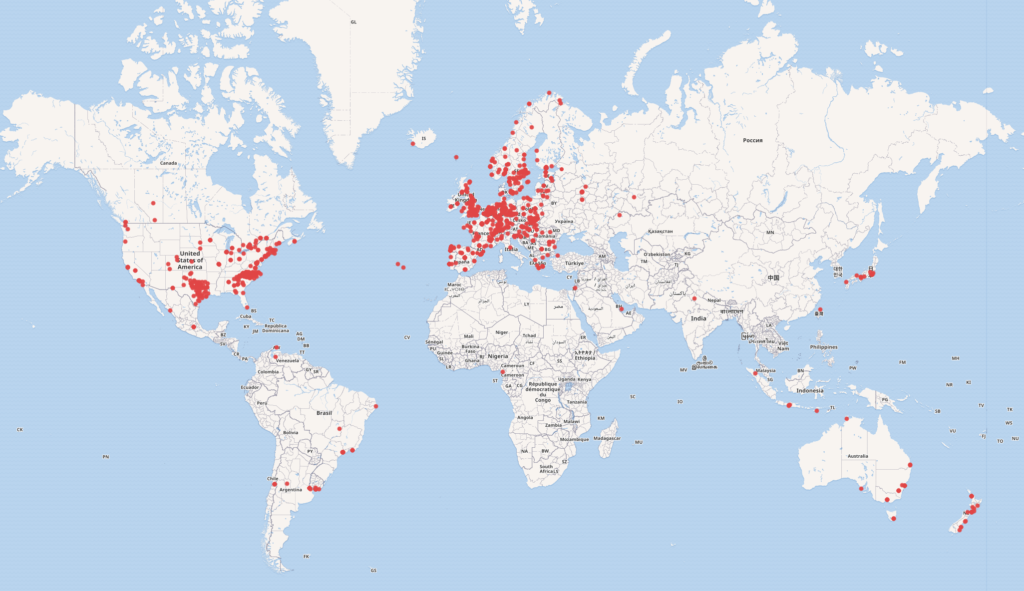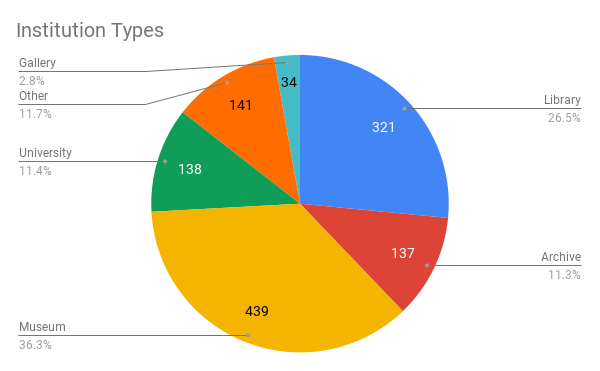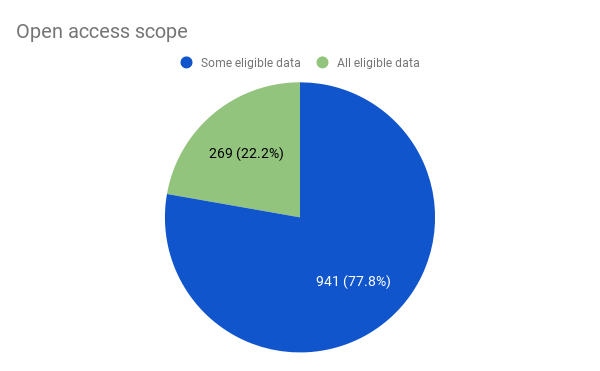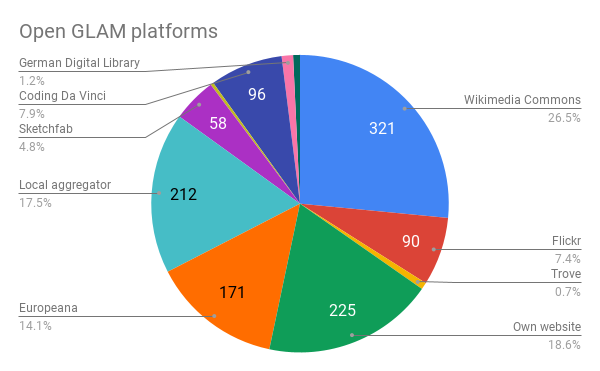As 2021 draws to a close, what is the latest picture of open access to cultural heritage (known as “Open GLAM”) around the world? How many institutions have adopted open access policies, and how have they done this?

Drawing on data from the Open GLAM Survey that I have led with Dr. Andrea Wallace since 2018, here are visualisations of some key data points.
Global distribution of Open GLAM
At the time of writing, more than 1200 instances of Open GLAM practice have been recorded. In which regions of the world is Open GLAM most often seen? As the Open GLAM Survey has been extensively annotated in Wikidata, visualisations such as this map can be generated via SPARQL queries:

Open GLAM by institution type
The Open GLAM Survey classifies institutions according to their primary function (such as library, gallery or museum). This chart shows the global breakdown of surveyed institutions by type:

Open access scope
How many GLAMs have released all, or just some, of their eligible collections openly? (Read more about this.) Here is the overall picture:

Open GLAM platforms
In addition to their own websites, GLAMs often also publish open access collections on 3rd party platforms like aggregator websites and Wikimedia Commons. Here is the latest breakdown of the key platforms:

Licences and rights statements in use
A relatively small number of legal tools, licences and right statements are generally agreed to be Open GLAM or open access compliant (see Open Knowledge International’s Open Definition for more information). Here is the current picture of the major Open GLAM tools in use:

The Open GLAM Survey is borne of extensive desk research and crowdsourced information from a global community of open access practitioners, researchers and activists. The Survey contains many data points from which useful analysis and visualisations can be created. If you’ve discovered something interesting or have a question, please get in touch, and to explore the raw survey data, visit the Survey spreadsheet:

If you know of an institution practising open access that you think should be included, please complete this short Google Form.
Read more about the Open GLAM Survey
All visualisations are © Douglas McCarthy, CC BY 4.0